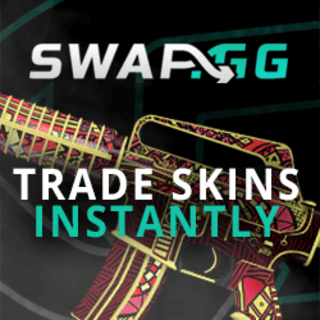The Economics of eSports Sponsorship Deals and What Brands Are Looking For in Players
The eSports industry has shown a marked increase, with the global market projected to grow from $2.06 billion in 2024 to $9.29 billion by 2032.
Sponsorships play a substantial role in this sector, offering brands an efficient way to reach a young, tech-savvy audience. Brands involved in eSports sponsorships can be categorized into three primary groups: endemic sponsors, non-endemic brands, and regional brands. These categories offer a comprehensive view of the diverse landscape of sponsorships within eSports.
Endemic sponsors are brands already associated with the gaming world. For instance, Intel sponsors the Electronic Sports League, incorporating its products throughout the competition. This targeted approach helps brands directly engage with their core audience, ensuring that their products remain top-of-mind for gamers. Product placements within these events further reinforce this connection.
Non-endemic brands are those not directly related to gaming but see value in tapping into the eSports audience. High-profile companies like Coca-Cola, Monster Energy, and Mastercard are heavily involved in eSports sponsorships. Coca-Cola, for example, sponsors events like the FIFA ESports World Cup, reaching football fans who are also interested in gaming. Monster Energy supports numerous tournaments, taking advantage of the energetic and youthful audience that eSports attracts. Mastercard extended its sponsorship with Riot Games, signaling confidence in the long-term viability of the eSports market.
Regional brands play a critical role in localizing sponsorship efforts. For instance, the 2024 ESports World Cup featured participation from 27 brands, including LG and Pepsi, highlighting the broad appeal and local engagement opportunities within eSports.
Economic Impact and Market Growth
Revenue streams in the eSports market come primarily from sponsorships, advertising, merchandise sales, and media rights. Sponsorships stand out as an effective channel due to their targeted reach, often delivering a higher return on investment compared to traditional sports sponsorships. The compound annual growth rate of 20.7% from 2024 to 2032 underscores the expanding economic influence of this sector.
Prize pools and player salaries illustrate the financial magnitude of eSports. Top eSports athletes earn significant sums, sometimes on par with high-ranking professionals in other fields. For example, some top eSports athletes in India can earn up to Rs 1 crore annually. Major tournaments offer substantial prize pools, such as the $40 million prize pool for The International Dota 2 Championship. This significant financial incentive attracts top talent and increases the overall competitiveness of the eSports industry.
The expansion of the eSports market is further fueled by increased viewership and participation rates. Viewership is expected to rise to 646 million by 2023. Investment in infrastructure and technological advancements supports this growth, widening the industry's reach.
Unconventional sponsors are increasingly joining the eSports sector, recognizing the value of associating their brands with a burgeoning industry. For example, online casinos have started sponsoring eSports events and teams. The strategic nature of eSports aligns well with the excitement and competitiveness associated with casino gaming, allowing these brands to connect with a similarly engaged audience. This trend illustrates how non-endemic brands are continually finding their niche within the eSports sponsorship landscape.
Cultural and Technological Influence
ESports' status as a legitimate sport is being increasingly recognized, evident through events like the League of Legends World Championship, which generate significant economic impacts for host cities. The inclusion of eSports in multi-sport events, such as the Asian Games, further underscores its cultural significance. This recognition is important for brands, as it offers assurances about the market's legitimacy and potential for long-term growth.
Technological advancements are integral to the enhanced viewing experience in eSports. Innovations like virtual reality (VR) and augmented reality (AR) have made eSports more accessible and engaging for global audiences. Streaming platforms such as Twitch and YouTube Gaming play a pivotal role in broadcasting events to millions of viewers, broadening the accessibility and impact of eSports.
The eSports market is poised for continued expansion, with new sponsorship opportunities and technological innovations driving this growth. The industry faces challenges such as the need for structured governance and fair play. However, the potential for growth remains significant. Brands increasingly recognize the value of eSports sponsorships as a means to connect with a highly engaged audience.
In 2024, the eSports sponsorship and advertising market is projected to generate approximately $1 billion in revenue globally. This growth is driven by the increasing digitalization of the gaming industry, the proliferation of smartphones, and growing awareness of eSports. The market's future expansion is expected to continue due to the formation of new teams, tournaments, and companies. China remains the largest market for eSports, followed by the United States and Germany, with the sector exhibiting strong double-digit growth.
Audience Engagement and Sponsorship Dynamics
The eSports audience is predominantly young, with many fans aged between 18 and 44. This demographic is more likely to be employed full-time, hold a university degree, and earn higher incomes. The audience is also mainly male, with a male-to-female ratio of 72:28. ESports fans tend to engage more with sponsors compared to the general population, with 85% agreeing that sponsors are crucial for funding sports organizations or events. This is significantly higher than the general population's agreement level of 69%.
Audience engagement with sponsors is robust, with fans more likely to try a sponsor's products, seek more information, participate in contests, and prioritize purchasing the sponsor's products. However, there is a perception among fans that there are too many sponsors at events, indicating a need for sponsors to balance their presence and interactions with the audience.
The eSports market in North America holds 37.2% of the global market share. The U.S. eSports market alone is valued at $1.07 billion, surpassing China's market value of $497.6 million. This dominance is attributed to the well-established eSports ecosystem in North America, which accounts for more than one-third of all eSports revenue worldwide.
Several major brands have made significant investments in eSports sponsorships. PepsiCo sponsors teams such as Splyce, Team Dignitas, and SK Gaming, as well as major events like the Gamers8 series. Coca-Cola has partnered with organizations like e-NASCAR and Riot Games, while Monster Energy sponsors numerous tournaments across various games. Mastercard's extended sponsorship deal with Riot Games covers events like the League of Legends World Championship.
ESports sponsorships are increasingly focusing on digital and social media assets. Traditional sponsorship assets like signage and hospitality still generate significant revenue, but digital inventory is beginning to drive more value. This shift is evident in the increased sponsorship spending in North America's major leagues, where technology firms are becoming prominent partners.
Overall, eSports sponsorships present opportunities and challenges. Brands must navigate the market effectively to optimize their investments, balancing their presence to maintain audience engagement while maximizing return on investment. The future of eSports sponsorships looks promising, with continuous growth anticipated as the industry matures.













